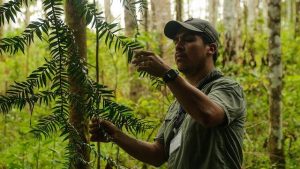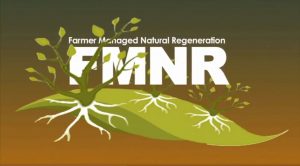 There are two important answers to the question “why do we need more trees in farmland?” One is global and one is local.
There are two important answers to the question “why do we need more trees in farmland?” One is global and one is local.
Globally, trees are often recognized as the ‘lungs of the world’ because they exchange oxygen and carbon dioxide with the atmosphere. However, this is an understatement. If we think in these terms, trees are also the kidneys of the world as they regulate the flow and use of water by intercepting rain and releasing it slowly to the ground where it can either run off into rivers, or enter the groundwater. Plants can then absorb it for use in photosynthesis. This absorbed water is then transpired back to the atmosphere and blown on the wind until it falls as rain somewhere else.
Thus, trees are also like the skin of the world, being the interface between the vegetation and the atmosphere for the exchange of gases and water.
Similarly, trees are like the intestines of the world exchanging nutrients between the soil and the vegetation, fueling the nutrient and carbon cycle.
Finally, they are like the heart of the world, as they drive the ecosystems that make the world healthy and function properly. They do this by providing a very large number of niches for other organisms to inhabit, both above and below ground. Recent evidence has reported 2.3 million organisms on a single tree – mostly microbes – but also numerous insects and even bigger animals like mammals and birds. Others also live in the soil or, due to the microclimates created by the physical stature of the tree, on the associated herbs and bushes. It is all these organisms that provide the ecological services of soil formation and nutrient recycling, feeding off each other and creating an intricate web of food chains.
All this is important for the maintenance of nature’s balance that prevents weed, pest, and disease explosions. They also provide services like pollination, essential for the regeneration of most plants, not to mention the very topical regulation of carbon storage essential for climate control.
Originally published on the Mongabay Website
Click here for the full story
 Trees are obviously good for the planet. What’s not so clear to most people—governments, NGOs, investors, the public—are their socioeconomic benefits. Trees are essential for the economy, our health and our wellbeing.
Trees are obviously good for the planet. What’s not so clear to most people—governments, NGOs, investors, the public—are their socioeconomic benefits. Trees are essential for the economy, our health and our wellbeing.

 This is the systematic regeneration of trees from living stumps, roots and seeds. over 5.5 million hectares in Niger, Senegal and Mali have been regenerated this way.
This is the systematic regeneration of trees from living stumps, roots and seeds. over 5.5 million hectares in Niger, Senegal and Mali have been regenerated this way. There are two important answers to the question “why do we need more trees in farmland?” One is global and one is local.
There are two important answers to the question “why do we need more trees in farmland?” One is global and one is local.